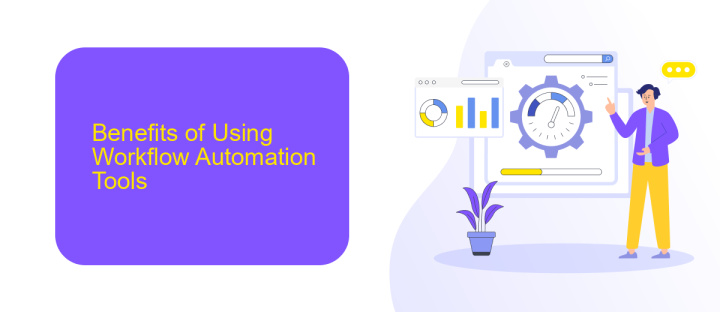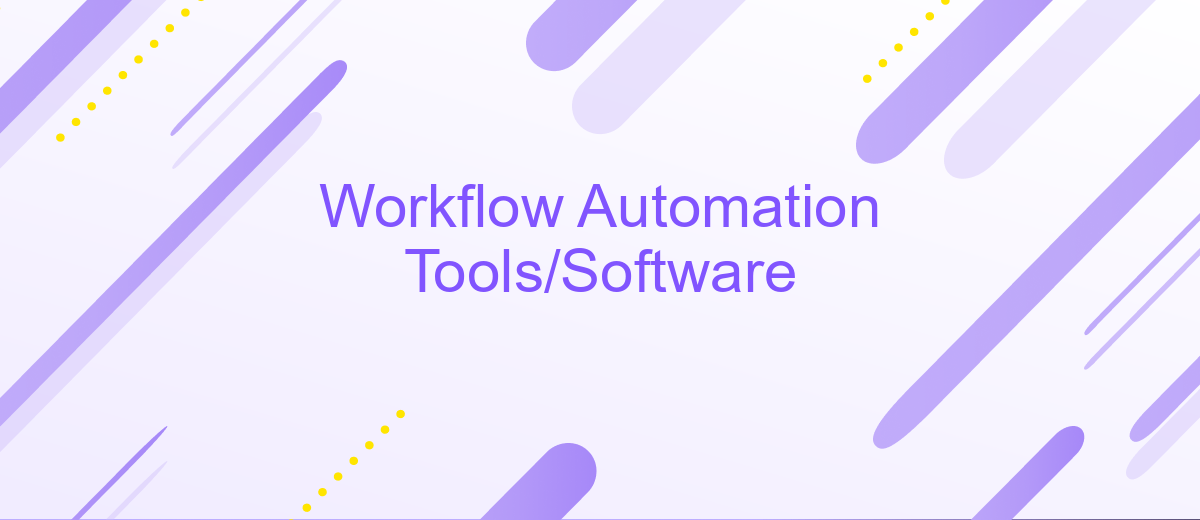Workflow Automation Tools/Software
In today's fast-paced business environment, workflow automation tools and software have become indispensable for enhancing efficiency and productivity. By automating repetitive tasks, these solutions not only save time but also minimize errors and streamline operations. This article explores the top workflow automation tools available, highlighting their features, benefits, and how they can transform your business processes.
Introduction: Understanding Workflow Automation
Workflow automation is a transformative approach that streamlines and optimizes business processes by automating repetitive tasks. This not only saves time but also reduces the potential for human error, allowing employees to focus on more strategic activities. As businesses grow, managing workflows manually becomes increasingly complex, making automation tools indispensable for maintaining efficiency.
- Increased productivity by automating routine tasks
- Enhanced accuracy and reduced human error
- Improved compliance and audit trails
- Seamless integration with existing systems
One of the key aspects of workflow automation is the ability to integrate various applications and services seamlessly. Tools like ApiX-Drive facilitate these integrations, enabling businesses to connect different software systems without the need for extensive coding knowledge. By leveraging such tools, companies can ensure that their workflows are not only automated but also well-integrated, leading to smoother operations and better data synchronization.
Benefits of Using Workflow Automation Tools

Workflow automation tools significantly enhance efficiency by automating repetitive tasks, allowing employees to focus on more strategic activities. These tools streamline processes, reduce errors, and ensure consistency across various operations. By minimizing manual intervention, businesses can achieve faster turnaround times and improve overall productivity. Additionally, workflow automation tools provide valuable insights through analytics, enabling better decision-making and continuous process improvement.
Another key benefit is the seamless integration capabilities offered by many workflow automation tools. For instance, services like ApiX-Drive facilitate easy integration between different applications, ensuring smooth data flow and communication across platforms. This not only saves time but also reduces the complexity of managing multiple systems. By leveraging such integrations, businesses can create a more cohesive and efficient operational environment, ultimately driving growth and innovation.
Types of Workflow Automation Tools

Workflow automation tools are essential for streamlining business processes and improving efficiency. These tools come in various types, each designed to cater to different aspects of workflow automation. Understanding the different types can help businesses choose the right tool for their specific needs.
- Task Automation Tools: These tools focus on automating repetitive tasks such as data entry, email responses, and scheduling. They help save time and reduce human error.
- Process Automation Tools: These tools are designed to automate entire business processes, from start to finish. They are ideal for complex workflows that involve multiple steps and stakeholders.
- Integration Automation Tools: Tools like ApiX-Drive allow businesses to integrate various applications and services seamlessly. They help in automating data transfer and synchronization between different platforms.
- Document Automation Tools: These tools automate the creation, management, and storage of documents. They are useful for businesses that handle large volumes of paperwork.
Choosing the right type of workflow automation tool depends on the specific needs and goals of a business. Whether it's automating simple tasks or complex processes, these tools can significantly enhance productivity and efficiency. Integration tools like ApiX-Drive are particularly useful for businesses looking to streamline their operations by connecting multiple applications and services.
Key Features to Consider

When choosing workflow automation tools, it is crucial to consider several key features that can significantly impact your business processes. These features ensure that the tool not only meets your current needs but also scales with your growing demands.
Firstly, look for tools that offer robust integration capabilities. The ability to seamlessly connect with various applications and services, such as ApiX-Drive, can streamline your workflows and enhance productivity. ApiX-Drive, for example, allows you to automate data transfer between different platforms, reducing manual effort and minimizing errors.
- User-friendly interface: Ensure the tool is easy to navigate and use, even for non-technical users.
- Customization options: The ability to tailor workflows to meet specific business requirements is essential.
- Scalability: Choose a tool that can grow with your business and handle increased workload.
- Security features: Data protection and compliance with industry standards are vital.
- Reporting and analytics: Tools that provide insights into workflow performance can help optimize processes.
By carefully evaluating these features, you can select a workflow automation tool that not only improves efficiency but also supports your long-term business goals. Remember, the right tool should adapt to your evolving needs and integrate seamlessly with your existing systems.
- Automate the work of an online store or landing
- Empower through integration
- Don't spend money on programmers and integrators
- Save time by automating routine tasks
Best Practices and Implementation
Implementing workflow automation tools requires a strategic approach to ensure maximum efficiency and effectiveness. Begin by thoroughly analyzing your current processes to identify repetitive tasks and bottlenecks that can benefit from automation. Prioritize these tasks based on their impact on productivity and resource allocation. It's crucial to involve key stakeholders from different departments to gather comprehensive insights and foster a collaborative environment. This will help in selecting the right tools that align with your organization's needs and goals.
Once you have chosen the appropriate automation tools, such as ApiX-Drive for seamless integration, start with a pilot phase to test and refine the implementation. Ensure that your team receives adequate training to leverage the new system effectively. Regularly monitor the performance and gather feedback to make necessary adjustments. Establish clear metrics to measure the success of the automation and continuously optimize the workflows. By following these best practices, you can achieve a smooth transition and significant improvements in operational efficiency.
FAQ
What is workflow automation?
How can workflow automation benefit my business?
What types of tasks can be automated?
How do I get started with workflow automation?
Can workflow automation tools integrate with other software?
Time is the most valuable resource for business today. Almost half of it is wasted on routine tasks. Your employees are constantly forced to perform monotonous tasks that are difficult to classify as important and specialized. You can leave everything as it is by hiring additional employees, or you can automate most of the business processes using the ApiX-Drive online connector to get rid of unnecessary time and money expenses once and for all. The choice is yours!


